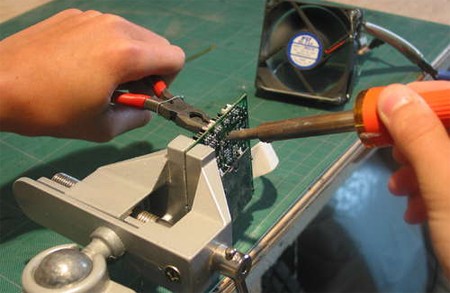[youtube=http://www.youtube.com/watch?v=yabesdeGKJo]
[Fritz] built this 600 joule capacitive discharge spot welder in a case scavenged from a Lincoln plasma cutter. All of the circuitry was designed by [Fritz] and the schematics are available on his website. He has a few other welding related project also documented on his site that are worth checking out. While this isn’t the first homemade spot welder we have seen, it is definitely the first one with a case mod. If you are not up to the challenge of building one quite as complex as [Fritz]’s example, a microwave can be used as the donor appliance in simpler designs.














